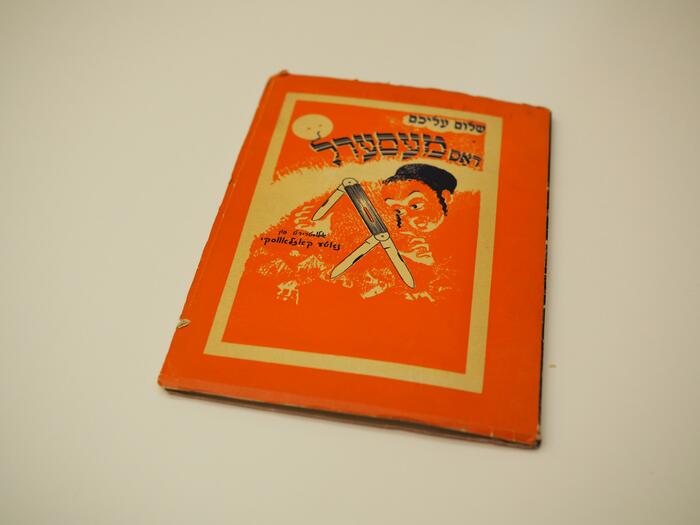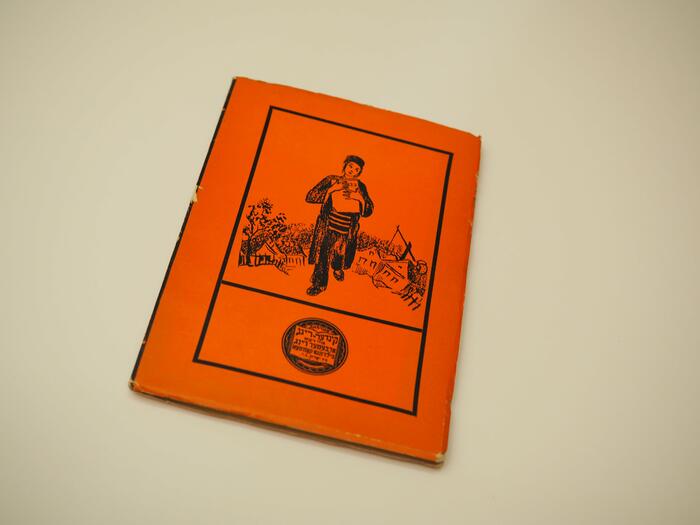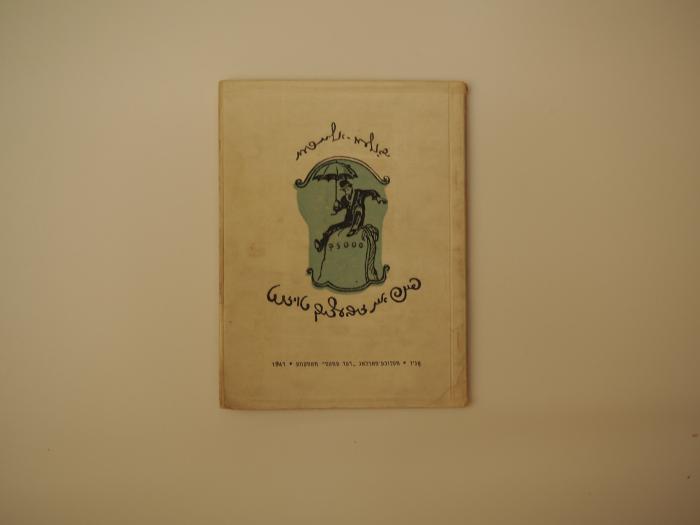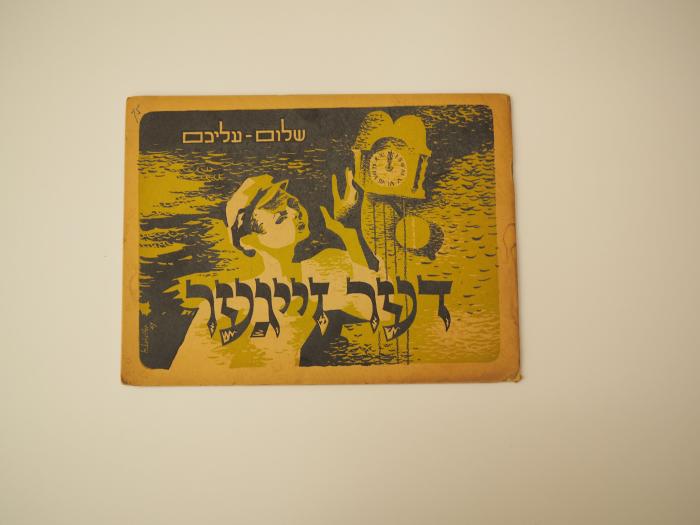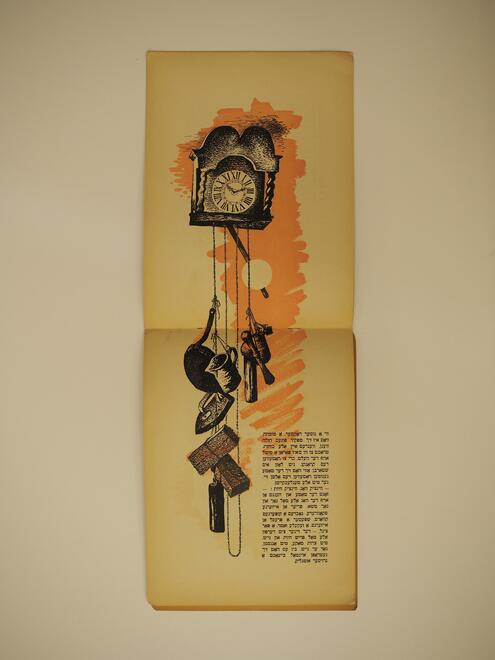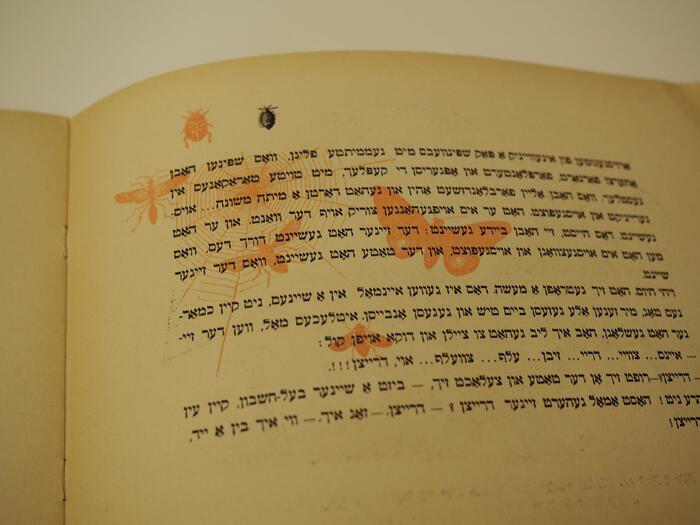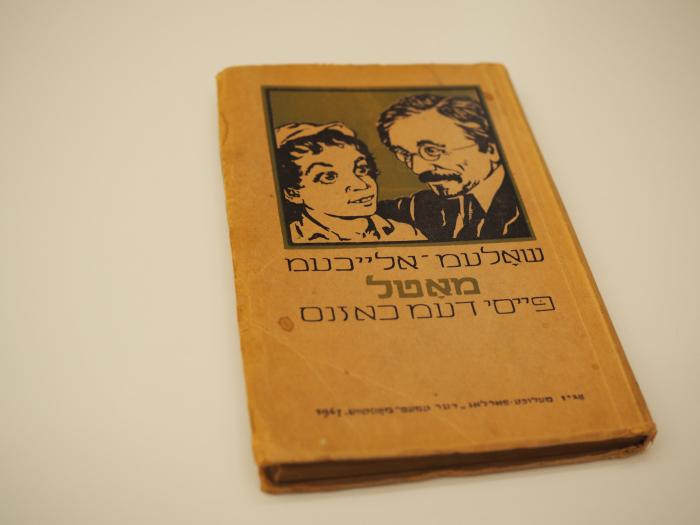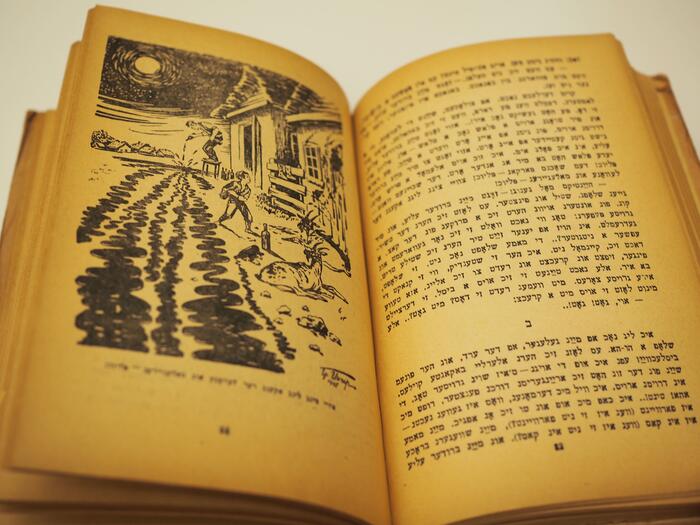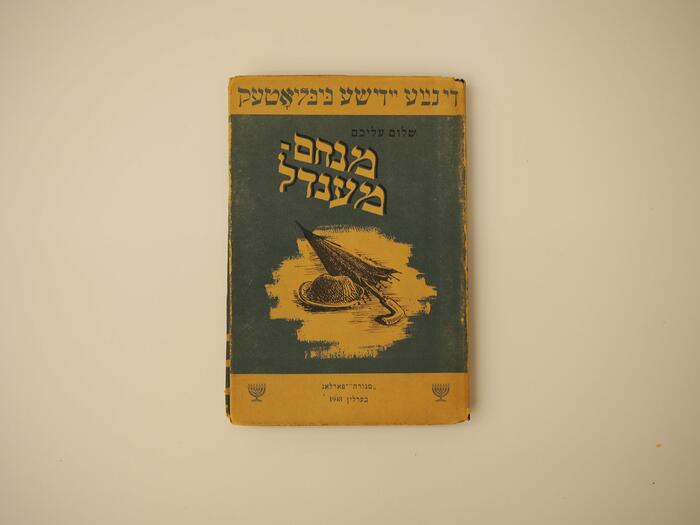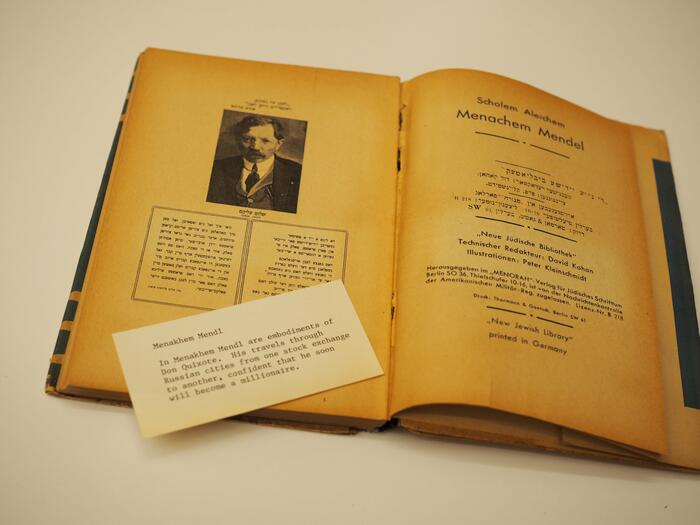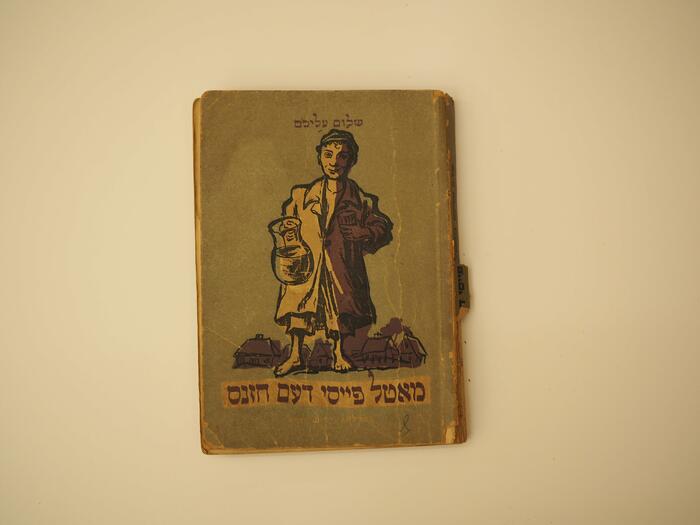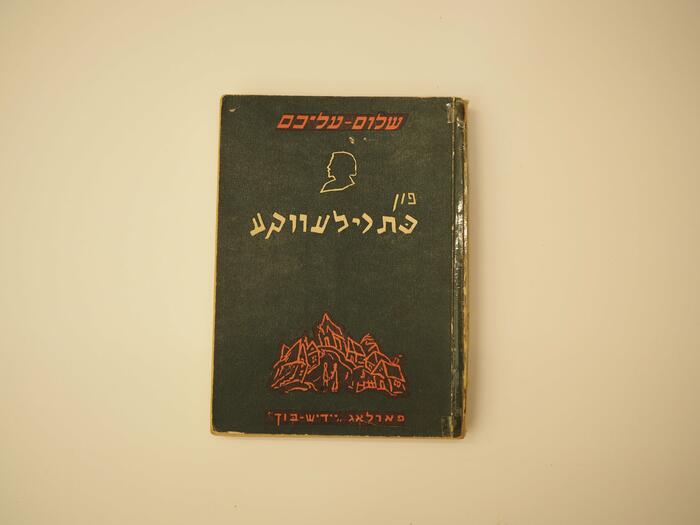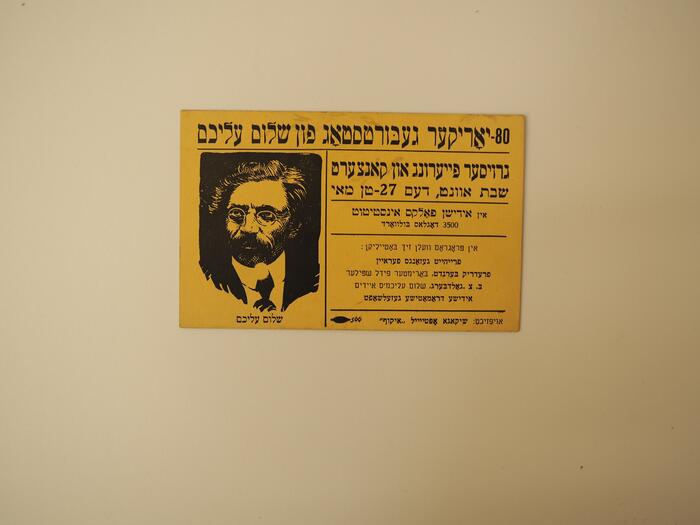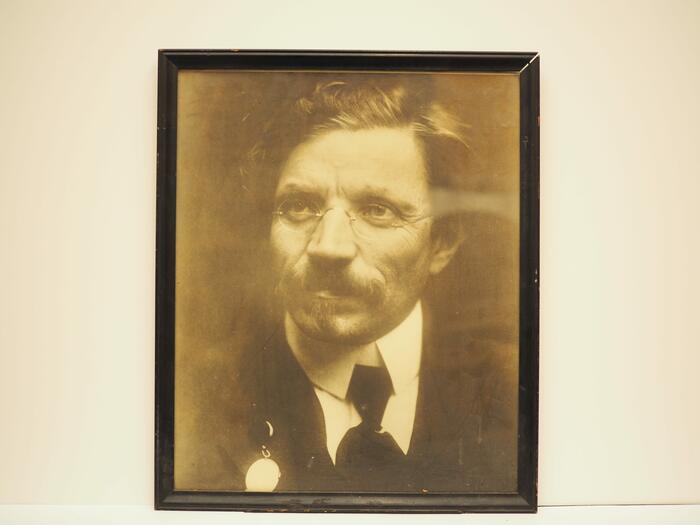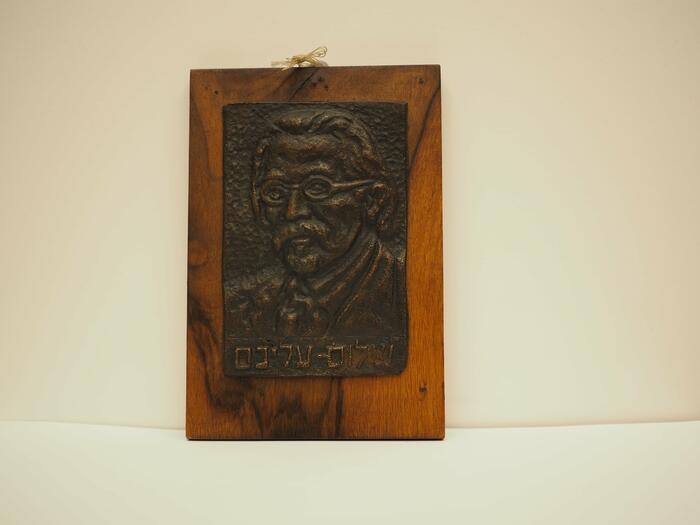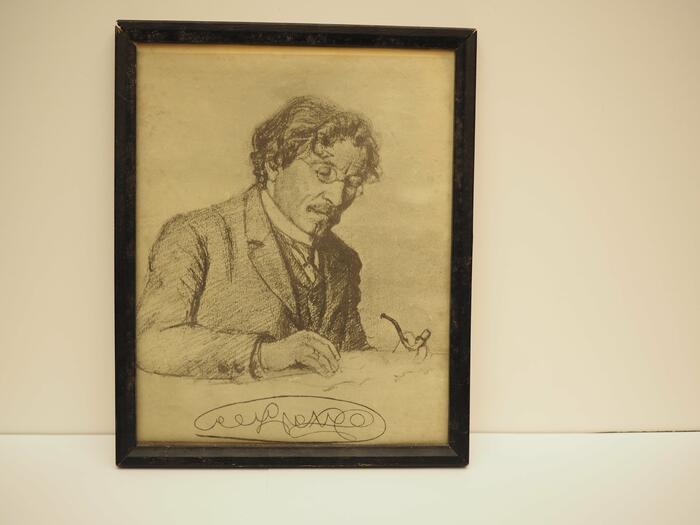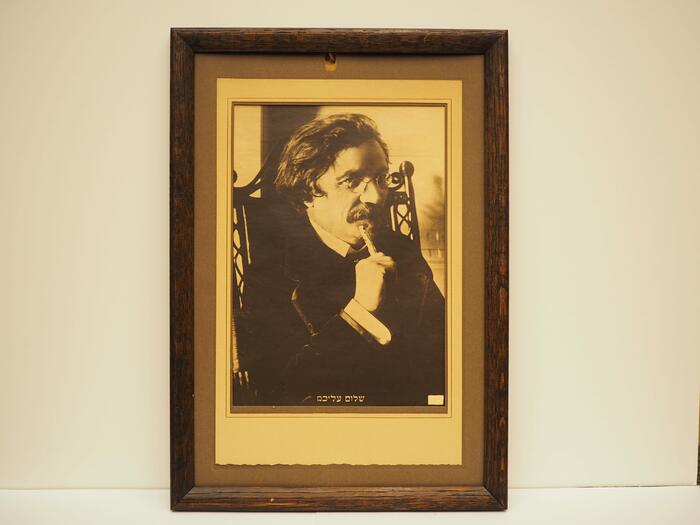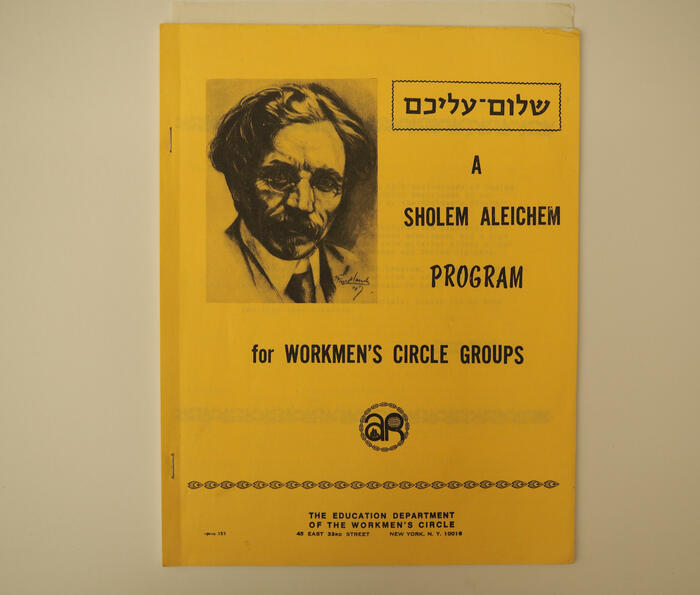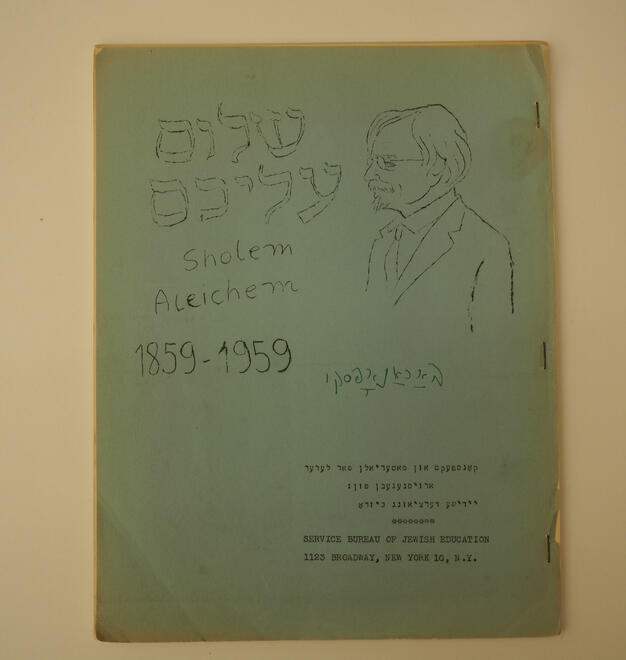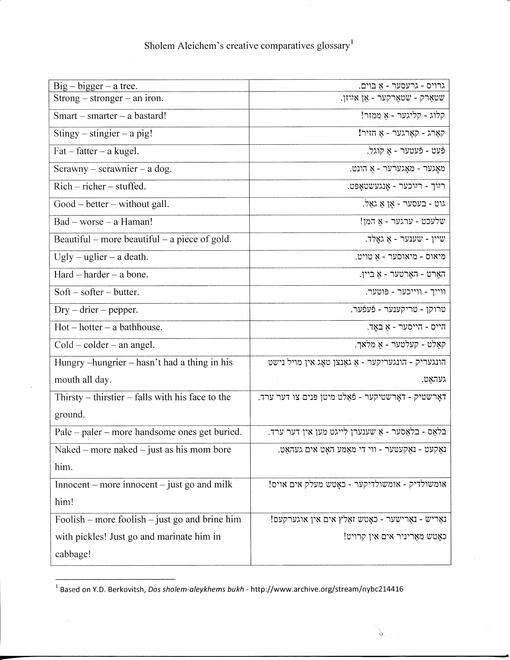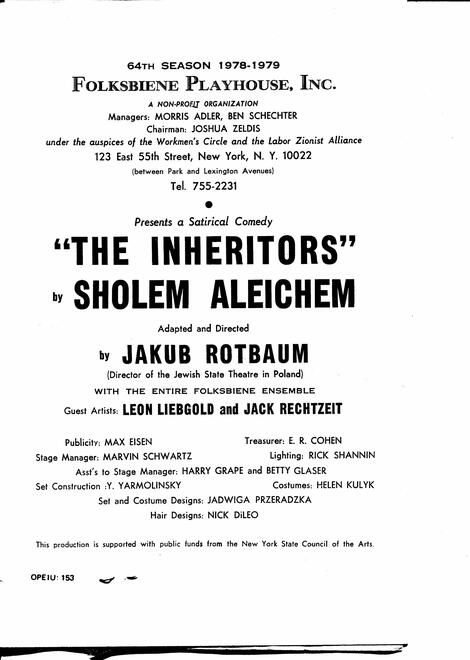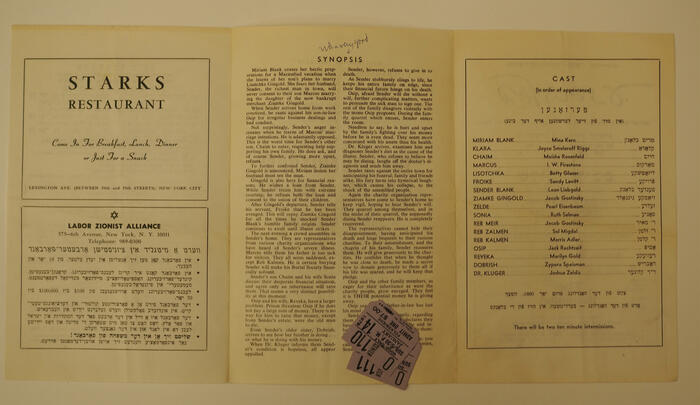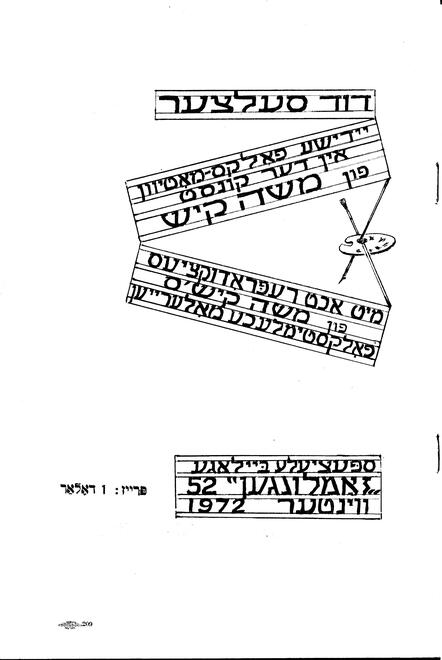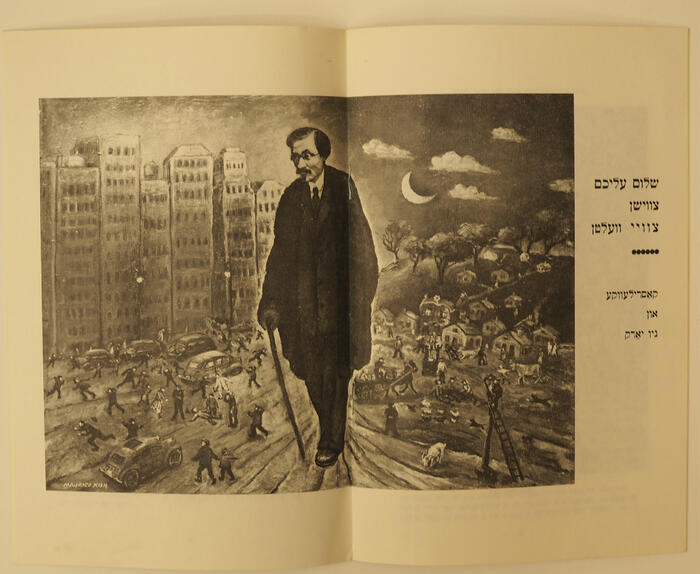Annotated Guide to Sholem Aleichem
Sholem Aleichem [Shalom Rabinovitz] (1859–1916) was the most beloved of all Yiddish writers. Although there were popular Yiddish authors before him, Sholem Aleichem was instrumental in shaping what we now call Modern Yiddish Literature. He nourished the young literature as a publisher and editor. As a writer, he waged a war to raise the aesthetic standards of Yiddish fiction. He routinely experimented with form and genres: plays, short fiction, story cycles, and epistolary novels, to name but a few. His writings captured the transformation of the Jewish people during what Benjamin Harshav has called “The Time of Revolution,” from the 1880s through the early twentieth century, the period of mass immigration and Jewish social movements that spread the enlightenment, modernity, Zionism, and modern political anti-Semitism. All of these topics are major themes in his work.
The Yiddish Book Center’s collections feature a trove of material by and about Sholem Aleichem, including translations, digitized editions of rare volumes, oral histories, and secondary sources. What follows is a guide to these varied holdings, and a selection of external resources.
Five Essential Holdings
1. Di yudishe folks-bibliotek (the Jewish People’s Library), published in Kiev in 1888. Sholem Aleichem was not only the most beloved Yiddish writer, he was one of the most important figures in the development of Yiddish literature. Edited and published by Sholem Aleichem, the aim of this miscellany was to sustain and nourish Yiddish literature, then in its infancy. It features important early publications by Mendele Mokher-Sforem and I.L. Peretz’s poem Monish.
2. Sholem Aleichem’s most famous literary creation is unquestionably Tevye, the Dairyman. Today, American audiences primarily know the character of Tevye through the stories’ transformation into Fiddler on the Roof. But Fiddler was only one of many theatrical and cinematic adaptations of Tevye. Our Academic Director Josh Lambert’s resource kit for teachers is a fantastic introduction to Tevye’s many transformations.
3. Sholem Aleichem: A Conversation with Ruth Wisse and David Roskies. In November 2015, Ruth Wisse and David Roskies came together at the Yiddish Book Center to discuss Sholem Aleichem’s legacy. Wisse and Roskies are two of the most important figures in Yiddish literary studies. Their work inspired—and continues to inspire—generations of scholarship. In the film, the two debate their favorite Sholem Aleichem stories and discuss his lasting impact
4. Bel Kaufman’s oral history. Bel Kaufman was Sholem Aleichem’s granddaughter, an excellent writer, and a brilliant storyteller. In April 2014, Christa Whitney interviewed her in New York for the Wexler Oral History Project.
5. “My First Jewish Novel, Stempenyu,” “We Moofe," and “Haman and Mordecai.” In honor of Sholem Aleichem’s centennial, the Yiddish Book Center commissioned three translations of Sholem Aleichem’s fiction. “My First Jewish Novel, Stempenyu” (1888) comes from the very beginning of his literary career. It dramatizes his struggle to create a uniquely Jewish novel. “We Moofe,” from Motl, the Cantor’s Son is the last thing that Sholem Aleichem ever wrote. Though Sholem Aleichem never finished the story, the fragment he left behind is suggestive and charming in its own right. Keeping with publishing tradition, our translation of “We Moofe” is followed by a brief note by Sholem Aleichem’s son-in-law and literary executor, Y.D. Berkovich, which describes the writer’s last days and how Berkovich learned of the news. “Haman and Mordecai,” which features the Haman and Mordecai, was begun in 1905 and completed the year of Sholem Aleichem’s passing. It enjoys an excellent critical reputation: Jeremy Dauber, Sholem Aleichem’s biographer, included it in his list “If You Read Just Ten Stories by Sholem Aleichem . . ." Despite its critical acclaim, this translation, by Saul Hankin, is the first English translation of the story.
6. A bonus sixth holding! Listen to this recording of Sholem Aleichem’s beloved story “On Account of a Hat.”
Books
The Yiddish Book Center’s collections feature no shortage of interesting editions of books by Sholem Aleichem and fascinating books about Sholem Aleichem. There are beautiful illustrated editions of Sholem Aleichem’s stories, and volumes most notable for the time and place in which they were published. A complete selection of books by Sholem Aleichem is available here.
Sholem Aleichem's Works
Although there is no “wrong way” to start with Sholem Aleichem, readers looking for an introduction to his work may enjoy one of the volumes designed for use in Yiddish schools. This volume, Kitser sholem aleykhem (The Abbreviated Sholem Aleichem), published in Buenos Aires in 1953, contains excerpts from his major works and some of his best known short stories.
Another interesting place to begin is Sholem Aleichem’s letters. One of his most famous and enduring works is his epistolary novel, The Letters of Menakhem Mendl and Sheyne-Sheyndl. Menakhem-Mendl is, in Dan Miron’s memorable words, “the characteristic Homo economicus, who reduces everything to its market value (although he never understands the rules of the market)." The book, as the title implies, is a series of letters between husband and wife: his letters represent Jewish fantasy, while hers are grounded in reality and lived experience. This edition published in Berlin in 1948 speaks to the book’s popularity.
Letters, however, were not simply a literary device for Sholem Aleichem. Sholem Aleichem was a voluminous letter writer, as evidenced by this 700-page, partial collection of his correspondence. The letters are an incredible resource for scholars as well as a delightful read.
This memorial volume, likewise, contains incredible resources for Yiddish scholars. It features historical photographs from Sholem Aleichem’s funeral as well as examples of his handwriting.
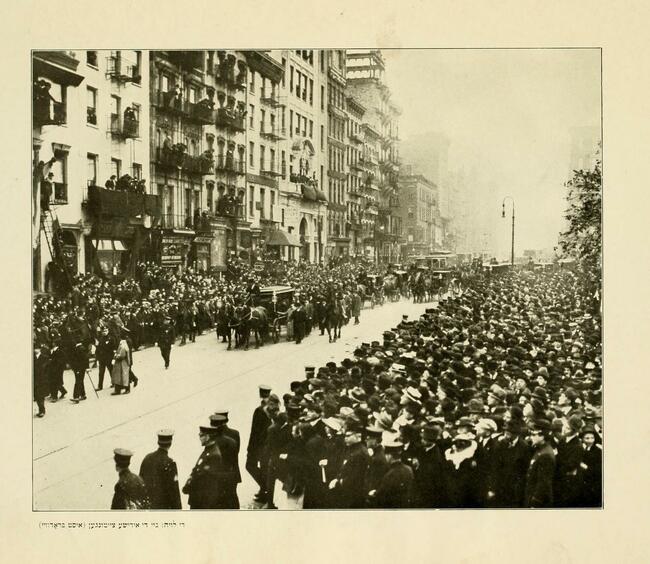
Finally, we recommend exploring one of the most important books in Yiddish literary history. Published the same year as Di yudishe folks-bibliotek, Sholem Aleichem’s 1888 chapbook, Shomer’s mishpet (The Trial of Shomer), was an important act of boundary setting. In this volume, Sholem Aleichem put the popular Yiddish writer Shomer (Nokhem Meyer Shaykevitch) and the entirety of Yiddish popular fiction on trial. Shomer wrote sensational chapbooks. And you can find fantastic examples of these in our collection, such as Halb mentsh halb affe (Half Man Half Ape) and Der Id un di grefin a hekhsṭ inṭeresanṭer un rirender roman : fun di Rusishe emigranṭen in Ameriḳa (The Jew and the Countess: A Highly Interesting and Moving Novel of Russian Emigrants in America). Sholem Aleichem used the form of the trial to advocate for a more literary, less-sensationalist and melodramatic Yiddish fiction.
Audio
Two of Sholem Aleichem’s major works are available in our Sami Rohr Library of Recorded Yiddish Books, Motl peysi dem khazns (Motl, the Cantor’s Son) and Tevye der milkhiker (Tevye the Dairyman).
In addition, two volumes of short fiction are included in the Rohr Library: Fun kasrilevke, a selection of stories about Kasrilevke, Sholem Aleichem’s fictional shtetl/Jewish city, and a general volume of selected stories. For those interested in reading along with the Yiddish, copies of each story are available in our Steven Spielberg Digital Yiddish Library.
"An eytse"
"Goldshpiners"
“Funem priziv” (page 141)
"Khanuke gelt"
“London, far vos brenstu nisht?” (page 289)
“Milkhiks” (page 157)
“Mir arbetn in shop” (page 103)
The Yiddish Book Center’s Frances Brandt Online Yiddish Audio Library also contains a number of fascinating public programs and lectures about Sholem Aleichem. In a particularly insightful lecture, Chone Shmeruk, then professor of Yiddish at Hebrew University, unpacked Sholem Aleichem’s ambivalent relationship with America. On the one hand, Sholem Aleichem was an ardent Zionist. On the other hand, he recognized the significance of America as sanctuary for a Jewry in crisis.
In principle, there can be no doubt that his ideal was the settlement of the land of Israel. The apparent contradiction of his own ideology did not, however, prevent him from apprehending and predicting the role of immigration to America in the course of Jewish history. He was certain that the hand—this is his word—of divine providence revealed itself in the very possibility of Jewish immigration to America, that God’s providence had created, in time, a solution for the Jews of Eastern Europe, who needed or wanted to flee. Sholem Aleichem’s belief in divine providence in regards to Jewish immigration to America was expressed in his writing both long before 1906, at the very outset of his writing, and later in America, in the last years of his life.
אין פּרינציפּ קען גאָר ניט קײן ספֿק זײַן, אַז זײַן אידעאַל איז געװען דער ייִשובֿ פֿון ארץ ישׂראל. די אױבנױפֿיקע סתּירה מיט זײַן אײגענער אידעאָלאָגיע האָט אים אָבער נישט געשטערט צו באַנעמען און פֿאַראויסזען די ראָלע פֿון דער אַמעריקאַנער אימיגראַציע אין גאַנג פֿון דער ייִדישער געשיכטע. ער איז דערבײַ זיכער געװען אַז אין דער עצם מעגלעכקײט פֿון דער עמיגראַציע קײן אַמעריקע האָט זיך אַנטפּלעקט די האַנט --־־ דאָס איז זײַן װאָרט ־־-- פֿון דער געטלעכער השגחה, װאָס האָט באַצײַטנס געשאַפֿן אַ לײזונג פֿון ייִדן פֿון מיזרח אײראָפּע, װאָס האָבן פֿון דאָרט געמוזט אָדער געװאָלט אַנטלױפֿן. שלום עליכמס גלײבן אין דער געטלעכער השגחה װאָס שײך דער ייִדישער עמיגראַציע קײן אַמעריקע איז געקומען צום אױסדרוק אין זײַנע שריפֿטן סײַ אַ סך פֿריִער פֿאַר 1906 אין סאַמע אָנהײב פֿון זײַן ייִדיש שאַפֿן און סײַ שפּעטער אין אַמעריקע אין די סאַמע לעצטע יאָרן פֿון זײַן לעבן.
Other great archival recordings include the evening in honor of the seventy-fifth anniversary of Sholem Aleichem’s passing, and this lecture, by Itche Goldberg, on Sholem Aleichem’s humor.
OTHER HOLDINGS
-
Two episodes of the Yiddish Book Center’s podcast also cover Sholem Aleichem’s life and work. The first, an interview by Aaron Lansky of Sholem Aleichem’s biographer, Jeremy Dauber; the second, a conversation with Lisa Newman, Jeremy Dauber, and Sam Ball, the filmmaker behind sholemaleichem.org
-
Bel Kaufman was not the only one of Sholem Aleichem’s descendents to participate in our Oral History program. You can find interviews with Sherwin Kaufman, Sholem Aleichem’s grandson; grandson Mitchell Waife; and great-grandson Robert Waife.
-
Although the Yiddish Book Center primarily collects books, all kinds of objects make their way to the Center. This slideshow documents many of the more interesting pieces of Sholem Aleichem ephemera in our collection.

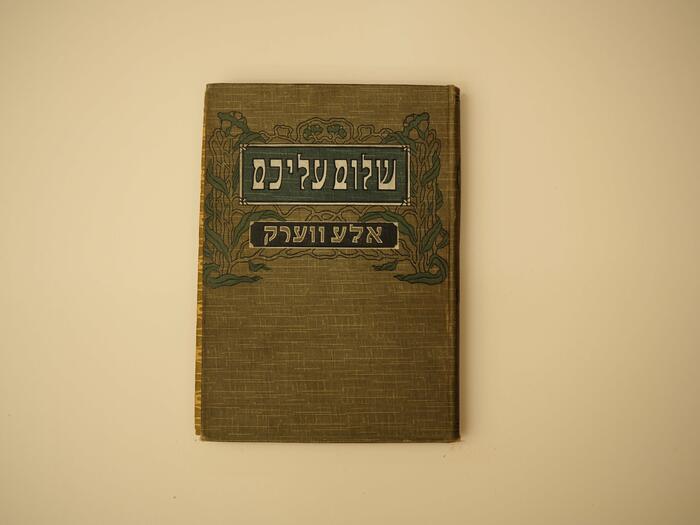
![Dos meserel [sic] Dos meserel](/sites/default/files/styles/slideshow_images/public/slides/P1010300-min_0.jpg?itok=xEd_Cn-S)
